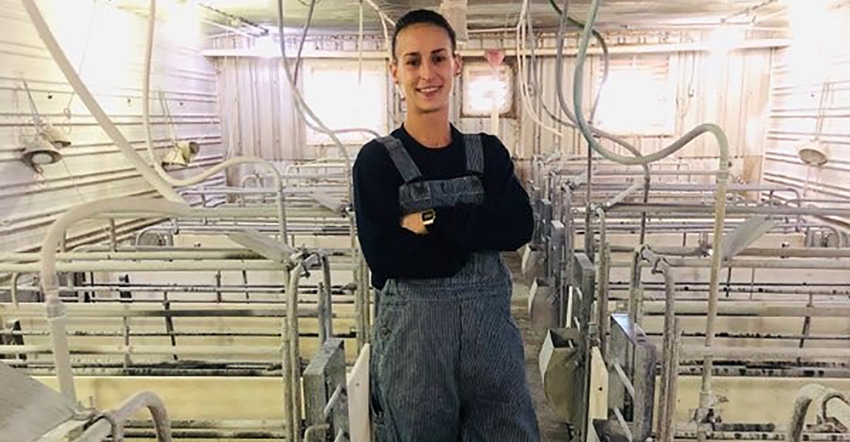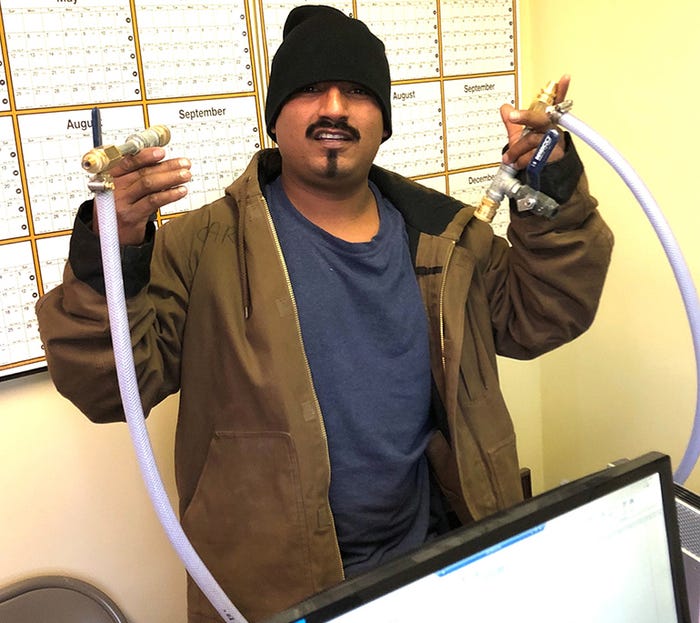Eradication of PDCoV is central to short- and long-term profitability of a sow farm.
December 24, 2019

Porcine deltacoronavirus, or PDCoV, is a newly detected porcine coronavirus, which, along with porcine transmissible gastroenteritis virus, porcine rotavirus and porcine epidemic diarrhea virus, are the major pathogens of the porcine epidemic diarrhea disease. They cause microscopic intestinal lesions leading to serious diarrhea, dehydration and death. PDCoV was first identified as a pathogen in Hong Kong in 2012 and in the United States in February 2014. Currently, the two treatment options for PDCoV are feedback and vaccination using an autogenous vaccine.
The problem at our two farms began on Dec. 24, 2017, with an acute, watery diarrhea affecting 3- to 5-day old piglets. Due to the time of year and the value of the weaned pigs, it was difficult for the owner to justify implementing a standard aggressive PEDV outbreak protocol. We, as an industry, often ask ourselves whether we should treat PDCoV like PEDV, or whether we should treat it as a milder form of PEDV. I would say that it depends on your confidence in your ability to implement the protocol. Based on our experience, the better long-term strategy is to treat an acute PDCoV outbreak aggressively, as if it were PEDV.
In August 2019 we were on the heels of reports of PDCoV outbreaks immediately after the pigs were commingled at placement. With our two-year farm history of infection, our plan was to implement an extreme sanitation protocol as well as monitor the gilt flow into both farms. We were hoping to completely eliminate the circulating virus at the farms.
Sanitation
Washing protocol for both farms:
Pressure wash (hot or cold water)
Pressure wash (hot water)
Spray 3% hydrogen peroxide
Dry
Coat with Virkon-S
Dry
Hydrated lime application
Let dry overnight before loading sows

After two years' worth of unsuccessful attempts to eradicate PDCoV from the two farms, we focused on protocol implementation with strict attention to detail. We emphasized that if something happens so that this protocol could not be accomplished, that excuse needed to be communicated to either the production manager or myself as it was happening. We could then work through the problem together. We did not want to wait to find out about difficulties until the seven-week period was over.
Washing sows — In addition to the above pressure washing protocol, each farm washed sows with Hog Wash before they were loaded into farrowing. The most efficient way to accomplish this would have been to wash in gestation stalls, but there was not an adequate water source in the gestation barns. We learned ways to wash the sows more efficiently with time.
We removed all extra equipment from farrowing, including mats and pans. We viewed this equipment as petri dishes, perpetuating the continuous cycle of pigs re-infecting each other. The goal of removing the mats and pans was to stop that cycle and make the extreme sanitation protocol as easy to implement as possible. We were already concerned about the labor aspect of this process and thus wanted to cut out time spent disinfecting mats and pans.
Road blocks
Immunity after exposure to the virus peaks after 18 to 21 days. In an acute break, this helps us implement a strategy to expose the whole herd. The problem is that we had a low-level infection continuously circulating throughout the farm. Gilts that were naïve to the virus became exposed and began shedding large amounts of the virus and amplifying the infection.
Washing the sows in place in gestation was challenging due to a lack of water hook ups. At one farm, we ended up washing the sows in the gestation hallway and for the other farm we washed the sows in one farrowing room, which we took out of the farrowing rotation.
One of the farms had a new, large farrowing room with eight rows of 12 crates per row. We were never able to completely empty the room, meaning we had to try to thoroughly sanitize one part of the room at a time.
Sampling plan
We initially found the virus in four rooms as well as in the holding rooms at both farms. We spent extra time on these rooms. We quit using the holding rooms, along with any rooms that tested positive for the virus. We collected fecal swabs from five to six suspect piglets in each farrowing room. We collected one swab per two rows in the large farrowing rooms at each site. Each of these swabs were pooled into threes and tested via PDCoV polymerase chain reaction at Iowa State University.
Monitoring progress
Over the next seven weeks, we tracked each farrowing room for its PDCoV status. This meant doing one pooled fecal swab per room per week so that we could get an idea of whether certain rooms were consistently testing positive. If we had one or two rooms that remained positive, but the other rooms were consistently negative, we would wean down or euthanize piglets in affected rooms. These rooms would be washed and sit empty for the rest of the turn.
Discussion items throughout the process
Wash farrowing hallways before loading sows into farrowing. We wanted to make sure that the freshly washed sows were tracking through a clean hallway as they were loaded into farrowing.
At first, one of the farms was able to apply a thick coat of lime to all surfaces of the farrowing rooms, while the other farm struggled. We had the managers share notes and pictures of lime application between farms.
Bypass the holding rooms. We stopped using the holding rooms, but had to make one exception. We washed/disinfected/applied lime to the holding room and allowed it to dry overnight for wean. After this, we washed/disinfected/limed the holding rooms and did not touch them again. We knew we needed to stop holding pigs on the farms, and began only weaning pigs directly off of the sow.
We wanted to keep an eye on incoming gilts and make sure they were not shedding the virus when we brought them in. We sampled the gilts in isolation and gestation at both farms, so we were able to gauge whether they were actively shedding the virus.
There was no need to sample the floors or other surfaces, in fact, this will only cause confusion. It's likely that dead virus would be able to be detected on farrowing room surfaces. PCR does not differentiate between dead and living virus, it only detects the presence or absence of the viral DNA.
After three sets of negative samples over a four-week span, we determined to continue the ultra-sanitation and sampling protocol for two full farrowing house turns. Washing of sows as they come into farrowing will continue for a full turn until all sows have been washed.
Result
As of Dec. 10, we completed two full turns of the farrowing house with 100% negative tests. We will continue monitoring for any new clinical signs, but at this point we consider the farms PDCoV negative. In the aftermath of the extreme sanitation protocol, we have buy-in from the farm staff regarding the efficacy of good old-fashioned elbow grease and a "less is more" mentality when it comes to creep feed, mats, pans and the like. We are beginning to evaluate which of the original practices we are going to bring back. For the most part, we plan to put some of those protocols to rest permanently.
Ultimately, a high viral load at the farm made PDCoV a long-term problem for us. When piglets and naïve gilts become infected, they shed the virus and become a vector of disease. If we had depopulated the farrowing house at the beginning of the initial break, we could have prevented the PDCOV from becoming endemic in the farms. Sanitation and downtime of the farrowing rooms became the key to our success.
As a sow farm, we all knew that eradication of the virus was central to our short- and long-term profitability. We hope that the teamwork and diligence to eradication of PDCoV from these two sow farms can be implemented on a larger scale as we work to eliminate the virus from the North American swine herd.
Source: Rachel Schulte, who is solely responsible for the information provided, and wholly owns the information. Informa Business Media and all its subsidiaries are not responsible for any of the content contained in this information asset.
You May Also Like



